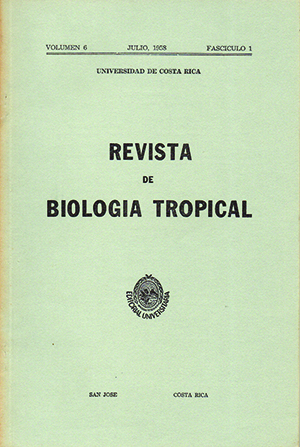Abstract
The incidence and symptomatology of intestinal helminth parasites were investigated in 1000 male and 1000 female entering students of the University of Costa Rica aged 17 to 20 years. The over-all incidence of helminths was of 41 per cent. The most frequent parasite was Trichuris trichiura (33% in men, 31.4% in women), followed by Ascaris lumbricoides (5.8% in men, 7% in women) Allcylostoma-Necator (5.8% in men, 1.2% in women). There were also found Strollgyloides stercoralis (1.6% in men, 0.6% in women), Enterobius vermicularis (2 cases, in females), Hymenolepis nana (1.6% in men, 1.4% in women) and Taenia spp. (0.6% in men, 1.0% in women). Helminthiasis symptoms in young adults have been little investigated. It is therefore interesting to note the occurence among these students of head aches, smarting of the conjunctive, and dysmenorrhea as the most frequent manifestations. Gastro-intestinal, hepatic, nervous, and allergic symptoms were also observed. Trichuris trichiura the most frequent nematode, causes also the highest incidence of symptoms, specially in females. Further studies are desirable to determine whether certain frequent desorders, such as headaches, conjunctival smarting, and dysmenorrhea should be investigated primarily as of helminthic origin, and especially as probable symptoms of Trichuris trichiura.






